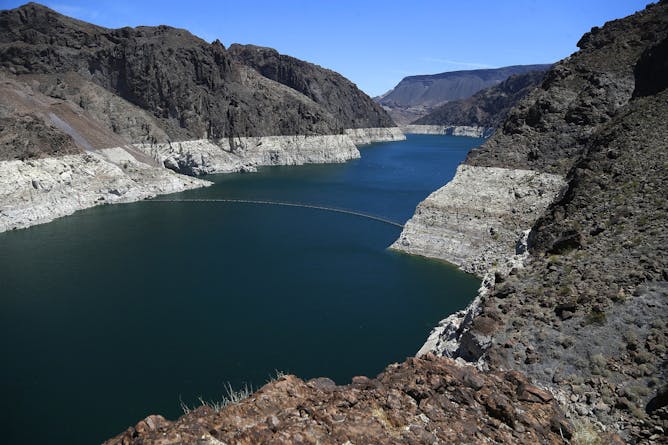|
As someone born and raised on the East Coast, I haven’t had to think much about limits on my family’s water use – except for my teens’ long showers. For Westerners it’s a different story. Years of drought and warmer-than-usual winters have depleted many of the reservoirs and snowpack reserves that people across the West rely on for drinking water, irrigation and hydropower.
This year the seven Colorado River basin states – Wyoming, Utah, Colorado, New Mexico, Arizona, Nevada and California – adopted a historic plan to address water shortages caused by overuse and climate change. The agreement, which runs through 2026, averts a nightmare scenario: draining Lake Mead, the water source for thousands of farmers and 19 million people in California. But as Colorado State University’s Brad Udall, Douglas Kenney of the University of Colorado at Boulder and the University of New Mexico’s John Fleck explain, now the real work starts: creating a long-term plan for living with less water.
Also today: why Trump can’t block you on Twitter, 2% of American water systems have lead problems and answers to questions about sex trafficking.
|

The white “bathtub ring” around Arizona’s Lake Mead (shown on May 31, 2018), which indicates falling water levels, is about 140 feet high.
AP Photo/Ross D. Franklin
Brad Udall, Colorado State University; Douglas Kenney, University of Colorado; John Fleck, University of New Mexico
Western states adopted a 7-year plan in May 2019 to manage low water levels in the Colorado River. Now they need to look farther ahead and accept that there will be less water far into the future.
|
|
|
|
|
|
|
|
|
Most read on site
|
-
Ryan Anderson, University of Pittsburgh; Hannah Ford, University of Pittsburgh
Adults are not the only people in the US who have problems with sleep – babies and children suffer from loss of sleep, too. Two pediatric sleep experts explain how you can help your little ones.
-
Graham Pruss, University of Washington
Many cities have no standard method for counting the number of people who live in their cars. This means that their issues are often overlooked in policies designed to help the homeless.
-
Sarah Thebaud, University of California, Santa Barbara; Leah Ruppanner, University of Melbourne; Sabino Kornrich, Emory University
Dirt blindness is used by some to excuse men for spending a third as much time as women cleaning. A new study shows it's a myth.
|
|
Today’s chart |
-
  |
Wendy Whitman Cobb
US Air Force School of Advanced Air and Space Studies
|
| |